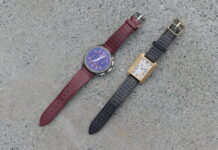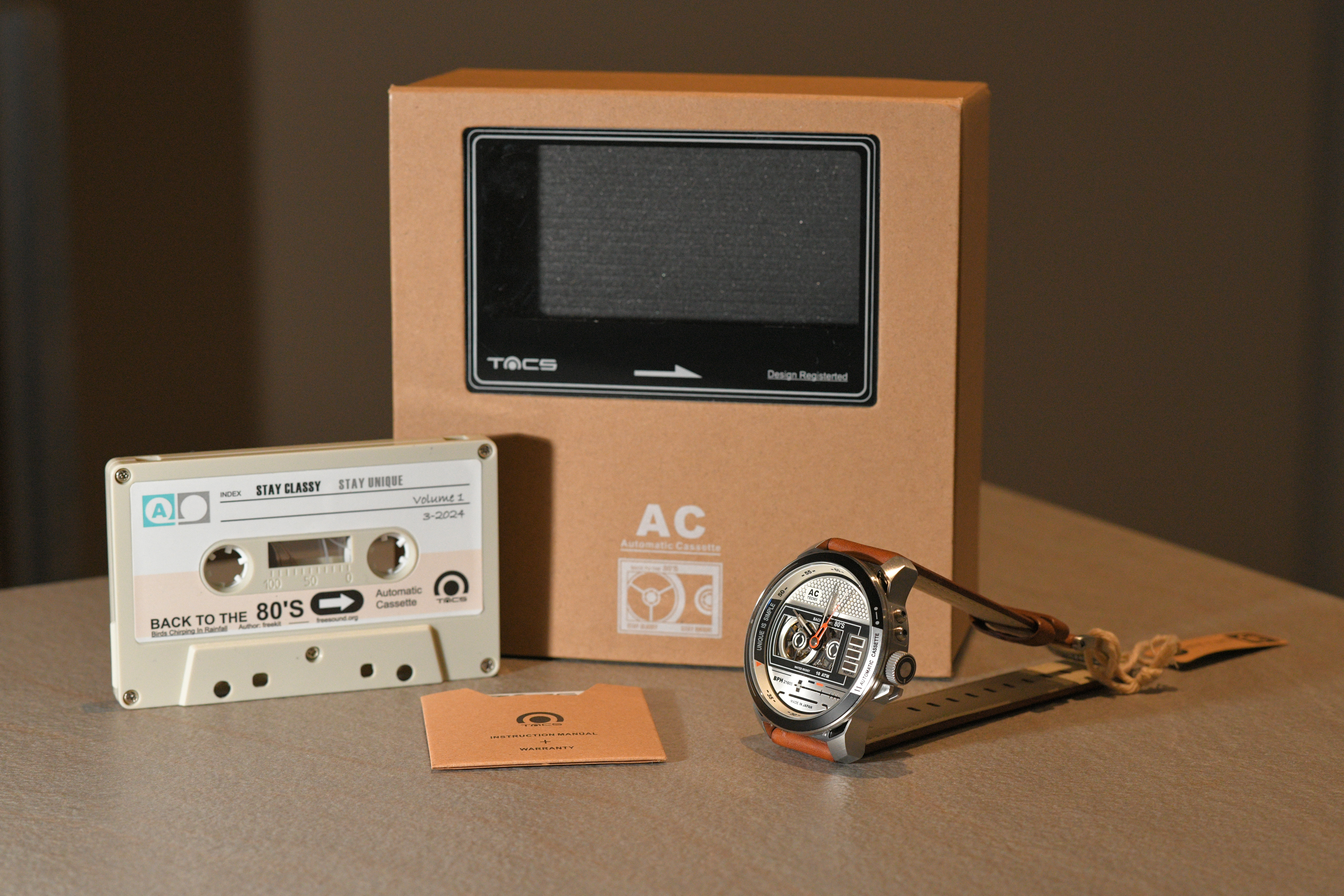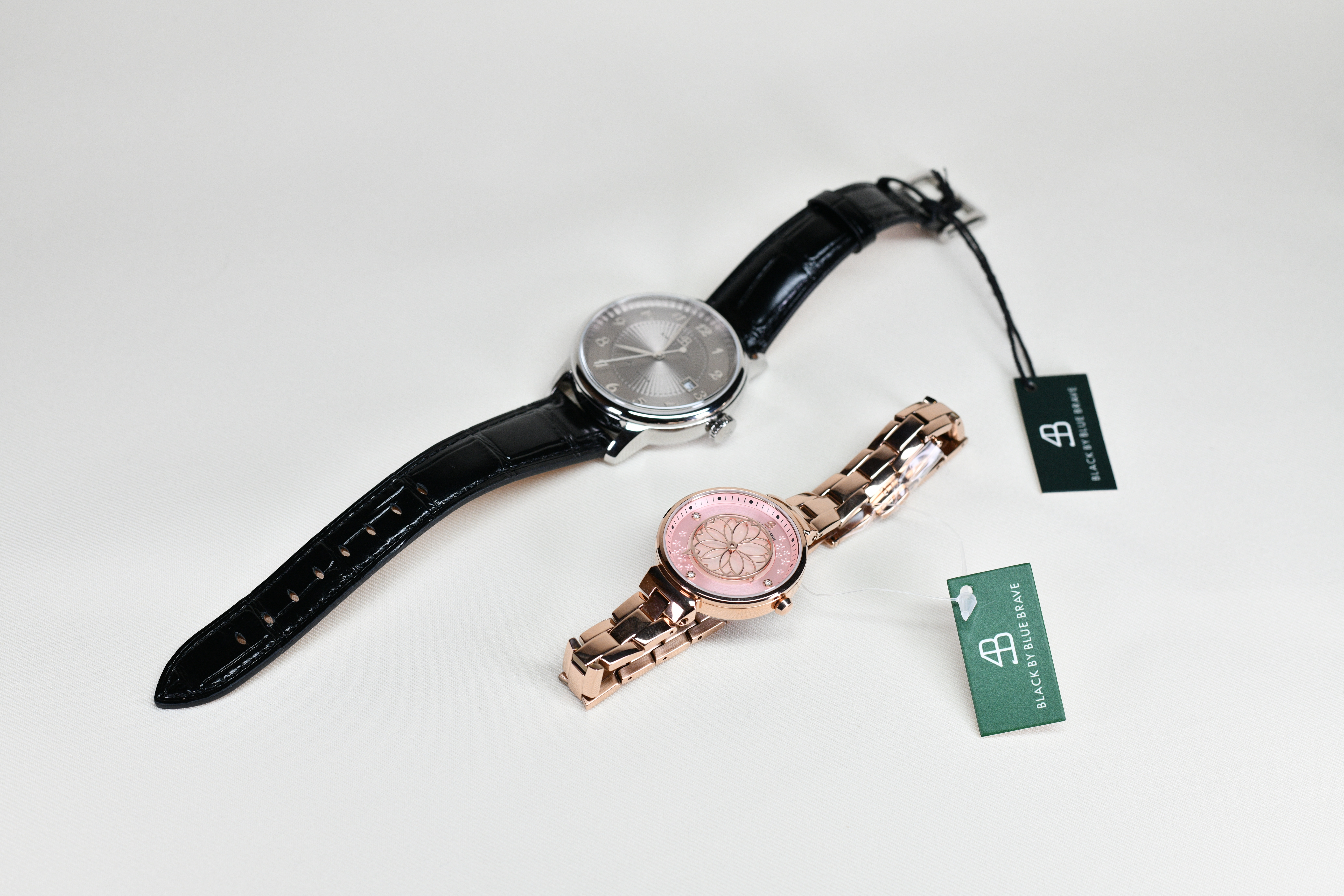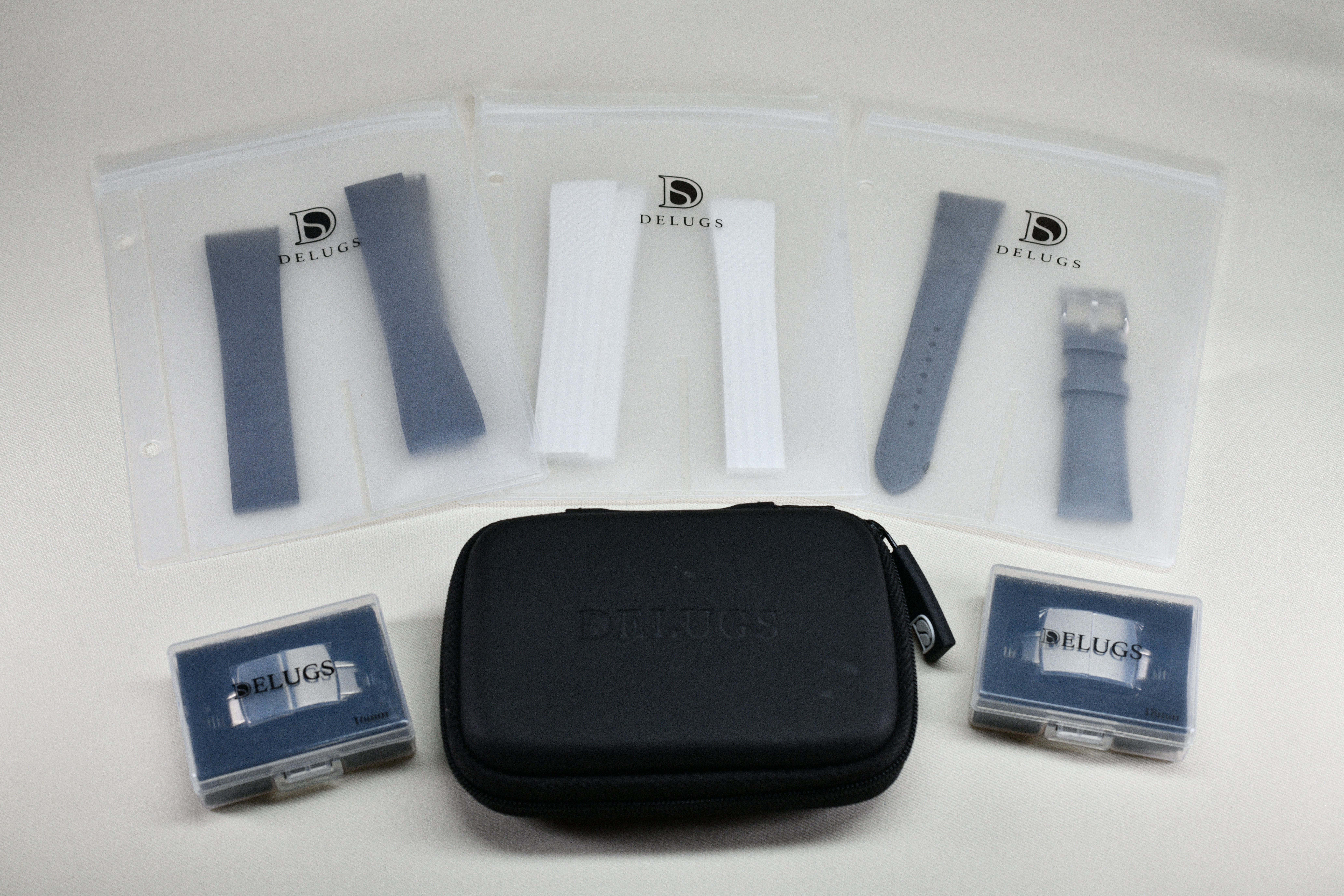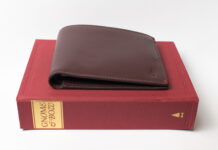Hello everyone, and welcome to another Singaporean review! This week, I’m taking a look at the RC1 by Swiss brand DWISS.

Not only will DWISS be the first Swiss brand I cover on Wahsoshiok, the RC1 will also be, by far, the most expensive microbrand watch I’ve reviewed till date. Right from the get go, expectations are high for this watch. Let’s see if it delivers.
DWISS – the Brand
DWISS (short for Design Watch Independent Switzerland) was founded in 2011 by Rafael Simoes Miranda. Rafael has been designing watches since 2006, and prior to starting his own brand, he plied his trade as a watch designer with over 15 different brands. He also happens to be a former teacher of watch design in Milan, Italy. In the relatively short time that DWISS has been operating, the Swiss microbrand has already racked up multiple design awards, winning two IDA (International Design Award) and two EDA (European Design Award) in the process.

DWISS describes themselves as “…a multi-design awarded Swiss brand of authentic and unique Swiss made timepieces that is innovating how time is displayed, pioneering the use of new materials and revolutionizing sales channels.” Affordable Swiss luxury brands – Tissot, Oris, Frederique Constant, Raymond Weil, Maurice Lacroix etc – have often been criticized for churning out boring (though well made) watches. While DWISS is relatively affordable (for an ETA 2824 Swiss watch), their creations definitely cannot be labelled as uninteresting. DWISS prides themselves as creators of intriguing, well crafted Swiss watches – and that brand positioning is something I think most watch enthusiasts can connect to!
Without further ado, let’s take a look at the DWISS RC1.
DWISS RC1 – Build Quality
Like most Swiss brands, DWISS prides themselves as a brand with great know-how and craftsmanship – and it is clearly reflected in the build quality of the RC1.

Firstly, the RC1 utilizes sapphire crystal to protect the dial of the watch. As aforementioned numerous times in my previous reviews, I’m a huge advocate of sapphire crystal due to their inherent scratch-resisting properties. Personally, I always look for sapphire crystal in my modern watches as it adds greatly to the durability of the watch. The sapphire crystal here is also AR-coated, preventing potential nasty reflections from occurring and ensuring clear legibility in most circumstances. In addition, the WR rating for the RC1 is stated at 200M, which is a pleasant surprise given that the RC1 also features an exhibition caseback! This means that you can bring the watch out to the pool or the beach if you desire, though I would still advise against that.

Secondly, the Swiss-made ETA 2824-2 powers the DWISS RC1. This movement needs no introduction – commonly found in watches from Swiss luxury brands such as Longines, Oris, Omega, Tudor, etc, the ETA 2824-2 is probably the most desired movement to be had in a microbrand watch, especially when compared to its Sellita/STP/Miyota counterparts. Some specifications: The ETA 2824-2 has 38 hours of power reserve, hacking feature, 4 Hz operating frequency, 25 Jewels and an ETACHRON regulator system. It is one of the most recognizable movements in the watchmaking industry, so getting it serviced should be no problem (aside from the cost, of course). The ETA 2824-2 movement in the RC1 comes in either elabore or top grade ($100 USD premium). As compared to elabore grade, the top grade movement (pictured above) has better regulation, and more importantly, comes decorated with blued screws, perlarge and Geneva Stripes.

If I had a knock, it would be the strap. A “genuine, Italian made leather strap” comes standard on the RC1, with a choice of either black or white for this particular SW dial variant. Don’t get me wrong – the strap itself is pretty decent. It’s soft, supple, and extremely comfortable on the wrist. The edges of the watch are beautifully dyed, and smoothed. In addition, I have to complement DWISS on the design of the strap buckle – it’s easily one of the most intricate that I’ve seen thus far. The buckle itself is delightfully brushed, the edges bevelled with polished finishing, and I absolutely adore the brand logo that is engraved on the prong. It is precisely because the buckle is so wonderful, that makes the strap slightly underwhelming. The strap would have been perfectly acceptable on a 3 figure watch, but the DWISS RC1 has a price tag of over 1.6K SGD – and for that price, I expect an exotic, handcrafted strap. Furthermore, genuine leather is the lowest quality tier of leather generally used for straps, and thus the stock strap will not develop patina the way top-grain or full-grain leather will. Personally, I think an alligator strap would fit it perfectly, and I will probably swap out the stock strap (note, it is quick release, so you would need extra spring bars for this) soon.
Overall though, the DWISS RC1 possesses good specifications – it does its “Swiss-made” label justice. My only niggle is the strap, but that is a problem easily fixed by going to a third-party leather craftsman.
DWISS RC1 – Design
Undoubtedly, the main calling card of the RC1 has to be its design.

I think the dial is immensely intriguing. It’s incredibly detailed – perhaps the most intricate dial I’ve seen since the Arcturus LC-1. There is an unreal amount of depth to the dial – in fact, DWISS states that the dial is comprised of 7 layers! There’s the main portion of the dial in the center, where the brand name is simply inscribed. At the top, the dial is cut-out to reveal a rotating disk underneath, on top of which roman numerals are applied. Elsewhere, minute indices are printed on yet another layer, which looks to have been sandblasted. There’s a silvery iridescence to the sandblasted layer, which adds texture contrast to the dial. At the bottom of the dial, the date window appears deeply recessed, with DWISS stating that it is hand-applied. Conspicuous date windows are a pet peeve of mine, and I have to say, I think that the date window is executed extremely elegantly here on the RC1. To top it off, there’s a brushed metallic layer that’s applied as a frame to the dial. The metallic layer separates and demarcates the various sections of the dial, with the full brand name, logo, as well as some relevant specifications engraved on it. For those of you looking, the all important “Swiss-made” label is tastefully included at 6 o’clock. Lastly, three polished screws, set atop the brushed metallic layer, further increases the texture contrast present in the watch. I really love the dial – it’s complex, it’s intricate, but it’s also clean and elegant at the same time, with the symmetry of the dial preserved. It’s a gorgeous demonstration of restraint, flair, and vision in equal measures.

When I first saw the RC1 (SW dial variant), it inexplicably reminded me of the Cartier Santos. I didn’t understand why at that time, but after prolonged wrist action with the RC1, it has since dawned on me. Firstly, there’s that elegance of the white dial/black indices combination – a timeless look. Secondly, there’s similar nuances in the dial design of both watches. For example, I love the use of a printed minute pad, with bold lines to indicate 5 minutes intervals – whilst not predominantly a Cartier aesthetic, the use of bold lines in a minute pad for 5 minutes intervals is widely seen in Carter timepieces, from the Tank to the Santos. There’s also the little counterclockwise arrows printed on the left side of the top of the dial – this is presumably to indicate that the hour disk of the RC1 turns in an anti-clockwise direction. In contrast, little dots (a bold dot for an hour) on the right side indicates the passage of time. and makes reading the time easier, slightly more intuitive. In addition, there’s also the use of screws on the dial, as well as the bezel – an aesthetic shared by the Cartier Santos. Make no mistake – I’m not saying that the DWISS RC1 is an homage of the Cartier Santos. It’s not, and no one would possibly mistake the RC1 for the Santos. What I’m saying is that the RC1 looks like something Cartier could have designed, and manufactured – and that’s high praise from me, considering that Cartier is one of my favorite watch brands (alongside A. Lange & Sohne)!
The DWISS RC1 is possesses more than just a pretty dial though – it also features what DWISS calls a “Mysterious Time Display”. Basically, time is told through a rotational hour disk, with the hours displayed at the top of the dial. A broad arrow points towards the minutes, while running seconds is displayed through a rotating center wheel. Interestingly, even the hands are intricately layered as well! For more information on how time-telling works on the RC-1, I’ve included a short video by DWISS above. To those who find traditional two-handed displays boring, this will certainly intrigue you.

The cushioned shaped case, combined with a round bezel, makes for a striking presence on the wrist. Again, there’s plenty of contrast here. The 4 screws that adorn the bezel are polished, as are the crown guards. In contrast, the bezel and the front portion of the case are brushed finished. I also want to point out that the screws used on the bezel are edged, and thus shaped differently from the rounded screws found on the dial – more evidence of the little nuances that this watch possesses. Furthermore, I want to commend DWISS on their execution of the bezel screws – it’s hard to have screws on the bezel of a watch without being labelled as a Royal Oak or Santos rip-off, but DWISS has made this their own wonderfully here.

The lugs on the RC1 are the most gorgeous I’ve seen on the watches I’ve reviewed thus far. Look at the faceted edges, the bevelled polishing, the angles and the contrast in finishing – it’s a masterpiece. They say a photo tells a thousand words – just look at the picture above! Magnifique.

We get a signed crown, which is par for the course at this price point. The crown itself is adequately sized, making the winding of the ETA 2824-2 movement a pleasure. It is also screw-down, undoubtedly a prerequisite to achieve the watch’s 200M WR rating. I like the black ring around the crown – not only does it continue the black/white aesthetic, it also allows for better grip due to the grooves present. Furthermore, I need to highlight the amazing case that the RC1 possesses. I can tell that this is custom-made to DWISS’ designs and specifications – it’s no catalog case, for sure! I love the plays of shapes here – the sharp angles of the lugs contrasts nicely with the roundness of the main case, as well as the crown. In addition, one sees alternating brushed/polished finishing across the multiple layers of the stepped case. I’ve mentioned above that the dial of the RC1 possesses contrast in depth and texture in spades, and I’m glad to see that the level of intricacy carries onto the case as well. Till date, one of the best finished cases I’ve seen thus far (for a microbrand watch) is the Mauron Musy Armure (coincidentally, also Swiss), but DWISS certainly gives MM a run for their money. Talking about money, it should also be noted that Mauron Musy watches are more than quadruple the price of the DWISS RC1 – I think that speaks a lot to the value that DWISS offers.

As aforementioned, the RC1 also possesses an exhibition, screwed-down caseback. The ETA movement here is nicely decorated – we get a signed rotor adorned with Geneva stripes, blued screws, as well as perlage. As aforementioned, do note that decoration is only present on the Top Grade variant (at a $100 USD premium), not the standard Elabore grade. There’s a slight bit of contrast on the caseback as well – the caseback is matte, while the case is brushed finished. In addition, each variant of the RC1 is limited to 199 pieces only, with each piece’s unique number engraved on the caseback.

I know I have been waxing lyrical about the RC1 thus far, but as a reviewer, I have to be critical and look for areas where the watch can be improved. While the RC1 may be the best designed microbrand watch that I’ve handled thus far, I do still think – if I’m splitting hairs – that there’s room for a bit more pizzazz. I would suggest DWISS experimenting with more exotic materials for the main portion of the dial (the layer where the brand name is printed). I would love a variant with white enamel or perhaps even mother-of-pearl used for that layer – it would certainly up the ante another notch. Perhaps black enamel could be used to fill in the minute hand as well! Just a couple of ideas that would make the RC1 even more special, whilst still retaining the core aesthetics of the watch.

The 45mm wide and cushion shaped case of the RC1 meant that it wears large on the wrist, definitely a little too large to be considered a dress option, at least conventionally. However, it is relatively thin at 13mm thick. This meant that despite its beefy proportions, it does not feel too conspicuous on the wrist.
All in all though, this is one impressively designed watch. Perhaps that shouldn’t really be a surprise – after all, the word “Design” is literally in the brand’s full name! There are a ton of little details, nuances, and intricacies literally in every corner of the RC1. Personally, I’m already pretty blown away by this watch (as evident in the amount of superlatives I’ve used thus far), but DWISS please, make an enamel version of the RC-1 using a combination of white and black enamel. That would truly knock it out the park, and push the envelope even further. Perhaps the design could surface as a collaborate effort between Wahsoshiok and DWISS – one can hope!
Shootout: DWISS RC1 vs SevenFriday M2
SevenFriday is of course, the other Swiss watch brand that pioneered, and popularized, the usage of rotational disks to tell the time. Both watches also fall into the same price range! As such, I’ve picked the M2 as the comparison to the RC1 in this shootout.

In terms of specifications, it is undeniable that the DWISS RC1 trounces the SevenFriday M2. The DWISS RC1 utilizes sapphire crystal, and is powered by the venerable Swiss ETA 2824-2 movement. In contrast, the SevenFriday M2 utilizes mineral crystal (which is significantly less scratch-resistant than sapphire), and uses a rather pedestrian Miyota 8 series movement. In terms of finishing, the RC1 triumphs over the M2 as well. Definitely, I would say that the RC1 would be more durable than the M2. Furthermore, while SevenFriday is a Swiss brand (they are based in Zurich), their watches are not “Swiss-Made” – an important distinction to make. Of course, one could argue that the “Swiss-Made” label is more marketing than substance. Still, I wish to clarify this as I often see confusion regarding this matter.

In terms of design, this is where it gets really subjective. Now, long-time readers of this website will remember that I once published an article slamming SevenFriday as a brand. That was in my early days, and since then (and after increased exposure with SevenFriday watches, as well as its design team), I’ve developed a more nuanced view of SevenFriday’s design. Do I like it? My personal answer is still no – it’s not my cup of tea. To me, the DWISS RC1 has the better design. It is more intricate, detailed, and is chock-full of depth and contrast throughout the watch, In addition, I’ll argue that the RC1 is more legible (in the sense that it is easier to tell the time) than the M2. The RC1 simply appeals more to my taste with its complex, and creative design. Yet, I have to acknowledge SevenFriday’s success. Despite the brand feeling like its been around for over a decade, SevenFriday as a brand is actually younger than DWISS – they were founded in 2012. SevenFriday managed to build an iconic design – based upon square, multi-layer dial constructions and a twist in time-telling – within a very short span of time. Even from a distance, SevenFriday watches are instantly recognizable, even to non watch aficionados. While they are not for me (I find them too “fashiony” for my tastes), I have to give them acknowledgement. I suppose they appeal to the crowd who likes different, “cool” designs – the same crowd Franck Muller and Hublot targets at the higher echelons – and fundamentally speaking, there’s nothing wrong with that. Nevertheless, the RC1 is a great testament to why DWISS has picked up multiple design awards over the years – I’m afraid I can’t say the same for SevenFriday, though their sales numbers are probably more valuable to them than any design award! I will say this though: I have held both watches in my hands before, and the DWISS RC1 feels, and looks (to me at least), better made than its SevenFriday counterpart.
Price-wise, the RC1 has the added advantage of being over $500 SGD cheaper than the SevenFriday. Based on the RC1’s superior build quality, as well as a more nuanced design, my personal victor is the DWISS RC1. That being said, SevenFriday watches are a love/hate kind of thing – if you like the design of the M2, go for it! There’s nothing wrong with buying a watch for its design. In fact, one would argue that seeing how mechanical watches have been largely made redundant by smartphones and quartz watches today, the design of mechanical watches is its main allure.
Conclusion: so the DWISS RC1 “shiok” or not?
Definitely. Despite its significant price tag (relatively for a microbrand), I think it justifies its price tag, and then some! The RC1 has fantastic build quality (honestly, the finishing is to die for), a detailed, multi-layered dial full of depth and texture, and an interesting way to tell the time. For those looking for something different, something unique, I believe that the RC1 is the answer. There are so many little details crammed into this watch that it made me have a mini watch orgasm when I set out writing this review. More than 3000 words later, I’m even more impressed with it than I was at the start! Some may balk at the prospect of spending over 1.6K SGD on a microbrand watch, to which I rebutt – which Oris/Frederique Constant/Maurice Lacroix/Raymond Weil/Tissot/etc. Swiss watch in this price range possesses the same amount of intricacies and innovation as the DWISS RC1 does?

For those interested, the promo code “WAHSOSHIOK” will entitle you to a whooping 15% off all DWISS timepieces! That’s a great deal, and I guarantee that you won’t be disappointed with your purchase.
View DWISS’ full range of watches here.
Specifications:
Dimension
45,0 mm diameter
13,0 mm thickness
Movement
Swiss made – Automatic movement
ETA 2824-2 (Elabore 2824-2)
Shockproof protection Incabloc®
Number of jewels: 25
Frequency 4Hz – 28’800
Power reserve: approximately 42h
Case
316L Stainless Steel with a 7-part multilayer structure
See-through case back
Dial
White/Silver dial with “mystery” time display
Glass (crystal)
Sapphire with anti-reflection
Strap
Genuine Italian made leather strap
DWISS exclusive Stainless Steel buckle
Water resistant
20 ATM – 200 meters

